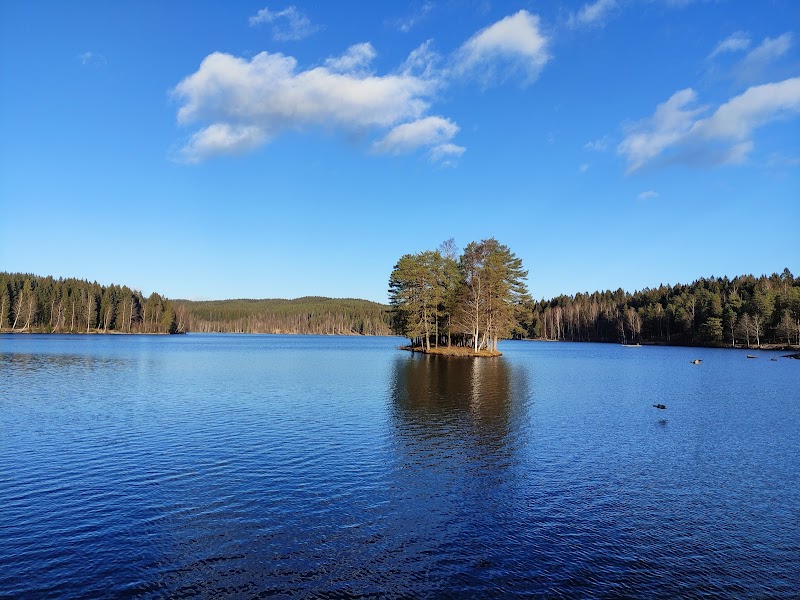Discover accessible walking tours just outside Oslo that offer a perfect mix of nature and adventure. With well-marked trails, varying terrain, and stunning views, these hikes suit both casual walkers and experienced adventurers seeking outdoor experiences close to the city.
Wear Sturdy Hiking Shoes
Trails near Oslo cover mixed terrain from mossy forest beds to rocky stretches, requiring reliable footwear to maintain grip and avoid injury.
Bring Water and Snack
Hydration is key, especially on longer or warmer hikes. Pack enough water and light snacks to stay energized throughout your tour.
Start Early for Best Light
Mornings offer soft light and increased wildlife activity, making your walk more enjoyable and photographically rewarding.
Check Trail Conditions Beforehand
Weather can quickly turn trails slippery or muddy; reviewing recent conditions helps you prepare and choose the safest routes.
Explore the Best Walking Tours Near Oslo: A Practical Adventure Guide
Explore the Best Walking Tours Near Oslo: A Practical Adventure Guide
Stepping outside Oslo’s urban rhythm reveals walking tours that challenge and reward with natural and cultural riches just minutes away from the city center. These trails invite adventurers of all levels to engage directly with vibrant forests, rugged terrains, and impressive panoramas. Whether you seek a moderate forest path or a steep hill climb, the walking tours near Oslo offer variety paired with clear routes and rich sensory experiences.
Starting with key spots like Nordmarka, just a short transit away from downtown, the forest lures with dense pine stands and lakes that ‘call’ to passersby. Expect well-marked trails varying from 5 to 15 kilometers, with elevation gains between 100 to 350 meters, testing stamina but never overwhelming. Terrain shifts between soft mossy ground, rocky sections, and wooden walkways, demanding sturdy hiking shoes to maintain grip and comfort.
A practical approach to these walking tours recommends bringing layered clothing for sudden weather changes and packing hydration, especially during warmer months when the forest ‘breathes’ actively with buzzing life. Early morning or late afternoon are ideal times to tour, as natural light enhances the views and wildlife is more active. Avoid mid-day summer heat and slippery conditions on wet ground during rainy days.
Walking tours near Oslo blend the city’s convenience with wilderness that remains fiercely itself—inviting respect and mindfulness. With trails designed for engagement rather than conquest, each step connects you with landscapes that dare you forward, whether following a serene lakeside or ascending a viewpoint that stretches your perspective.
Keywords for SEO
Walking tours near Oslo, hiking trails Oslo, day trips from Oslo, nature walks Oslo, Oslo forest hikes, outdoor activities Oslo, guided walking tours Oslo, Nordmarka hiking Oslo, best walking routes Oslo, easy to moderate trails Oslo.
These keywords capture the adventure’s core: accessible outdoor experiences directly linked to Oslo’s city life and immediate surroundings. They align well with what travelers seek—reliable information on hiking distances, trail conditions, and local highlights within striking reach of the urban center.
Below, browse nearby trips and excursions offered by local businesses to extend your outdoor adventure in Oslo’s region, including guided nature hikes, wildlife spotting tours, and lake kayak excursions. Each experience is crafted to deepen your connection with the landscape while providing dependable logistics and local expertise, ensuring your time outdoors is both invigorating and practical.
Nearby Trips
All Adventures
Boat Charters
Water Activities
Adventures near Oslo
Discover the unique and memorable adventures that make Oslo special.
Frequently Asked Questions
What is the best time of day to start a walking tour near Oslo?
Early mornings or late afternoons are recommended for cooler temperatures, better light for photography, and higher chances to observe wildlife active during these times.
Are the trails near Oslo suitable for beginners?
Most trails range from easy to moderate difficulty, making them accessible for beginners with reasonable fitness levels. Clear signage guides visitors along established routes.
What wildlife might I encounter on these walking tours?
Forest areas near Oslo host species such as deer, foxes, woodpeckers, and a variety of birdlife. In quieter sections, you might spot squirrels or hear owls in the evening.
Is it possible to join guided walking tours in Oslo’s natural areas?
Yes, several local companies offer guided nature hikes with knowledgeable guides sharing insights on flora, fauna, and history, enhancing the outdoor experience.
Are the walking tours accessible year-round?
Trails can be enjoyed year-round, though winter requires additional gear such as snowshoes or traction devices, and daylight hours are shorter. Spring to fall is the preferred season for most walkers.
What environmental practices should hikers follow on these tours?
Visitors are encouraged to follow Leave No Trace principles: stay on trails, carry out all trash, respect wildlife, and avoid disturbing plant life to keep the forests vibrant and healthy.
Recommended Gear
Hiking Boots
Provides needed support and grip on uneven and sometimes slippery terrain.
Water Bottle or Hydration Pack
Keeps you hydrated on longer or warmer hikes.
Layered Clothing
Adjusts for sudden weather changes common in forested areas near Oslo.
Trail Map or GPS Device
Helps with navigation on less-marked side trails or extensions.
Local Insights
Hidden Gems
- "Svartkulp lake viewpoint nestled in Nordmarka presents fewer crowds with panoramic reflections."
- "Kjelsås Hill offers a quiet overlook popular among locals for sunset views."
Wildlife
- "Watch for Eurasian red squirrels darting along branches and the occasional white-tailed eagle soaring overhead."
History
"The forests around Oslo have long served as hunting grounds and timber sources, intersecting with cultural heritage trails used for centuries."
